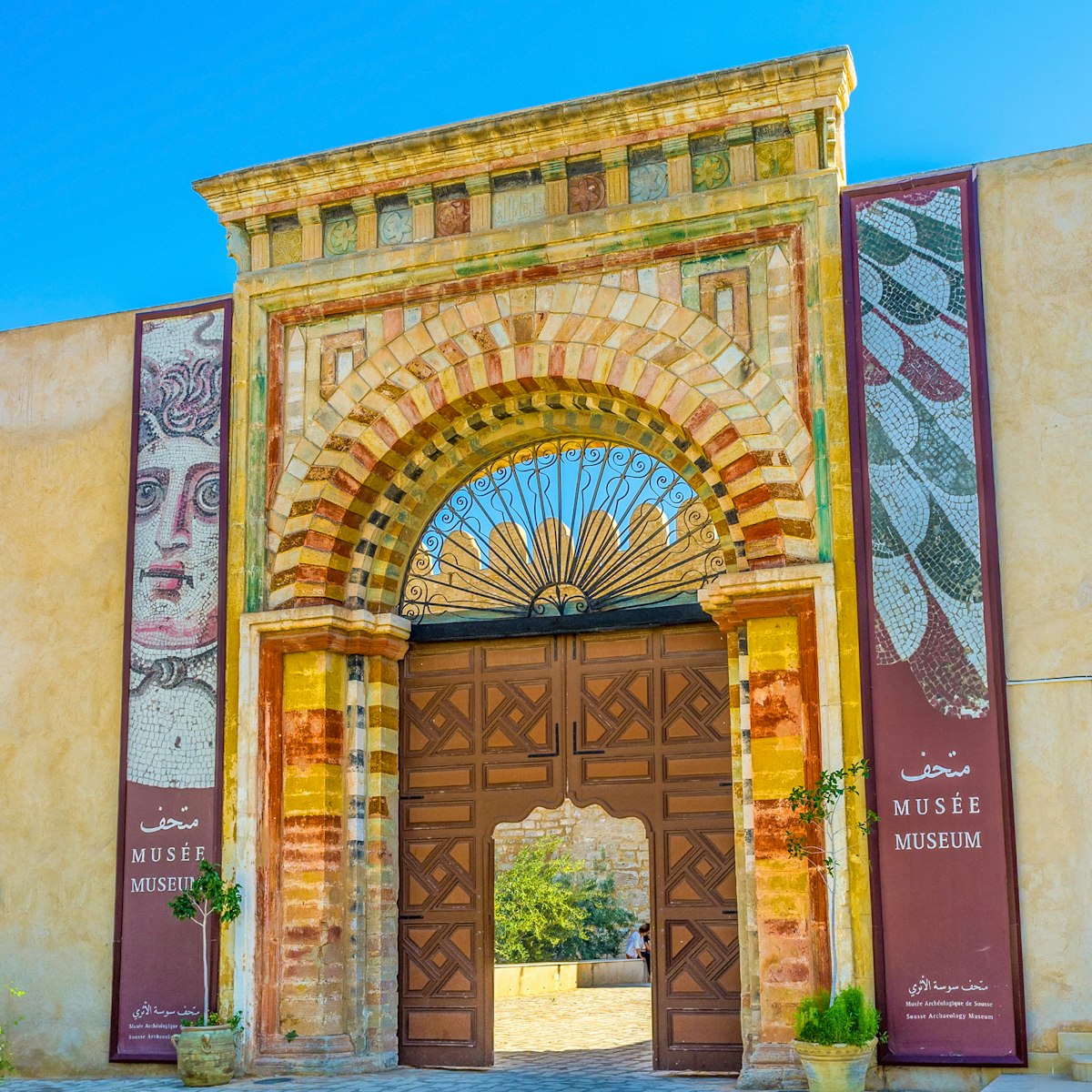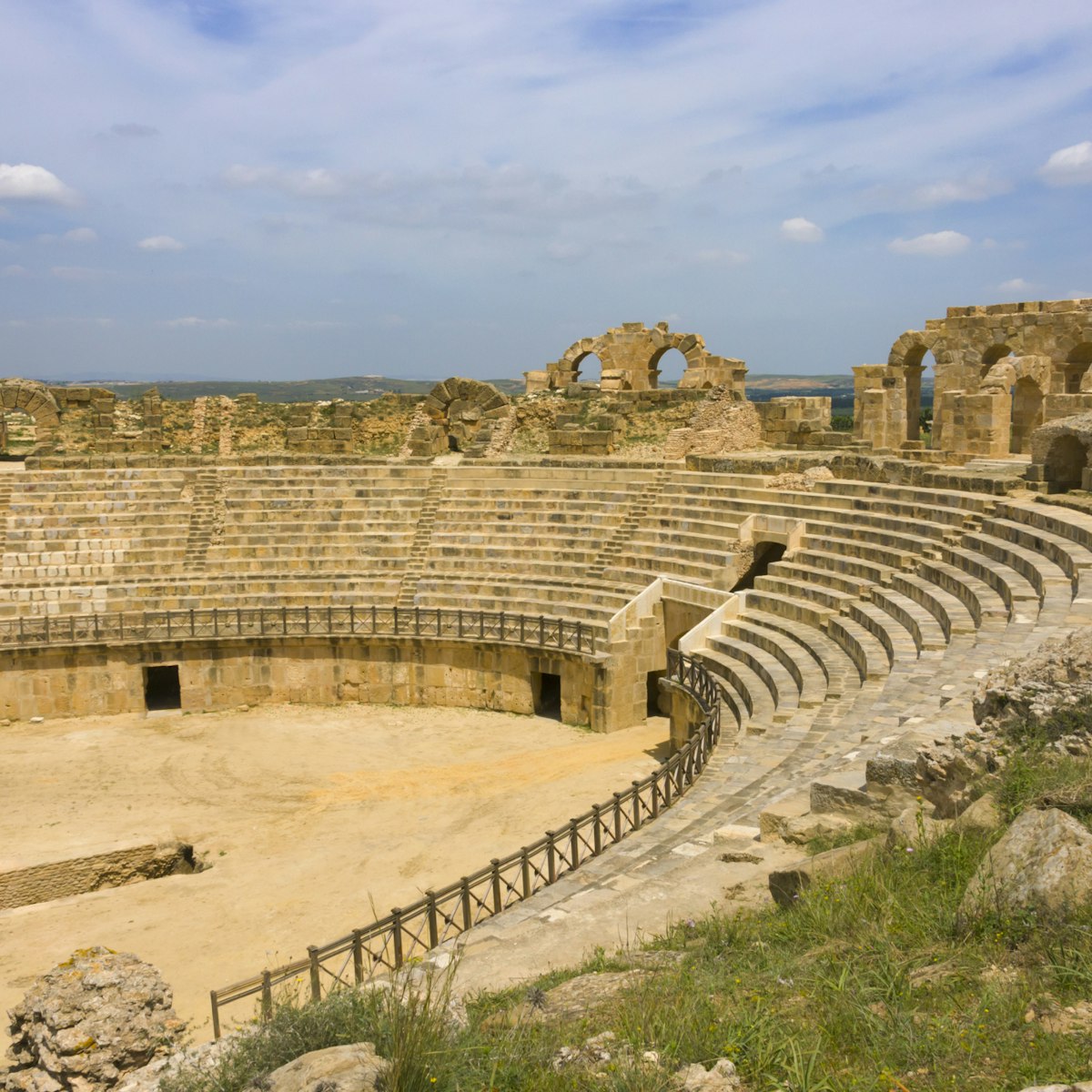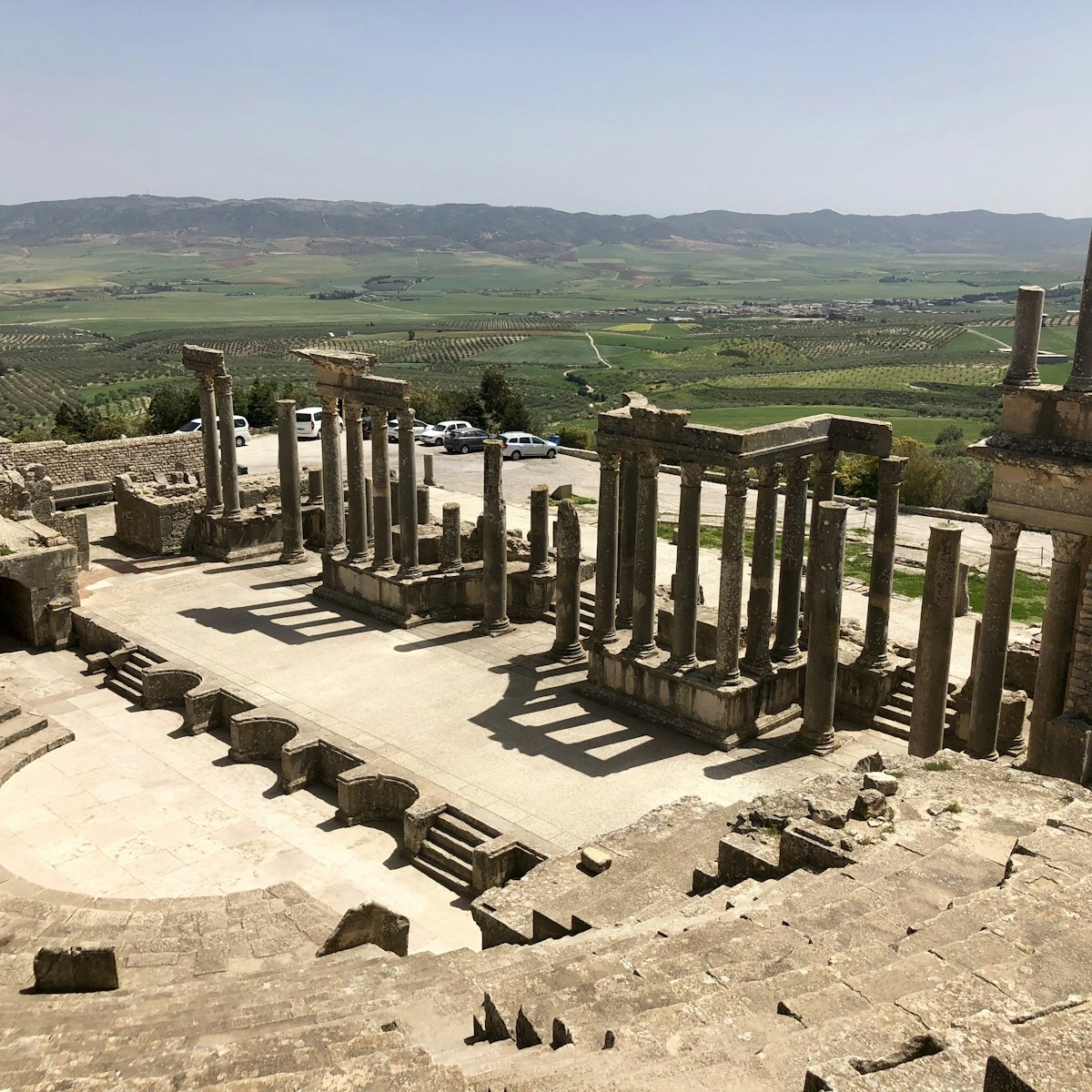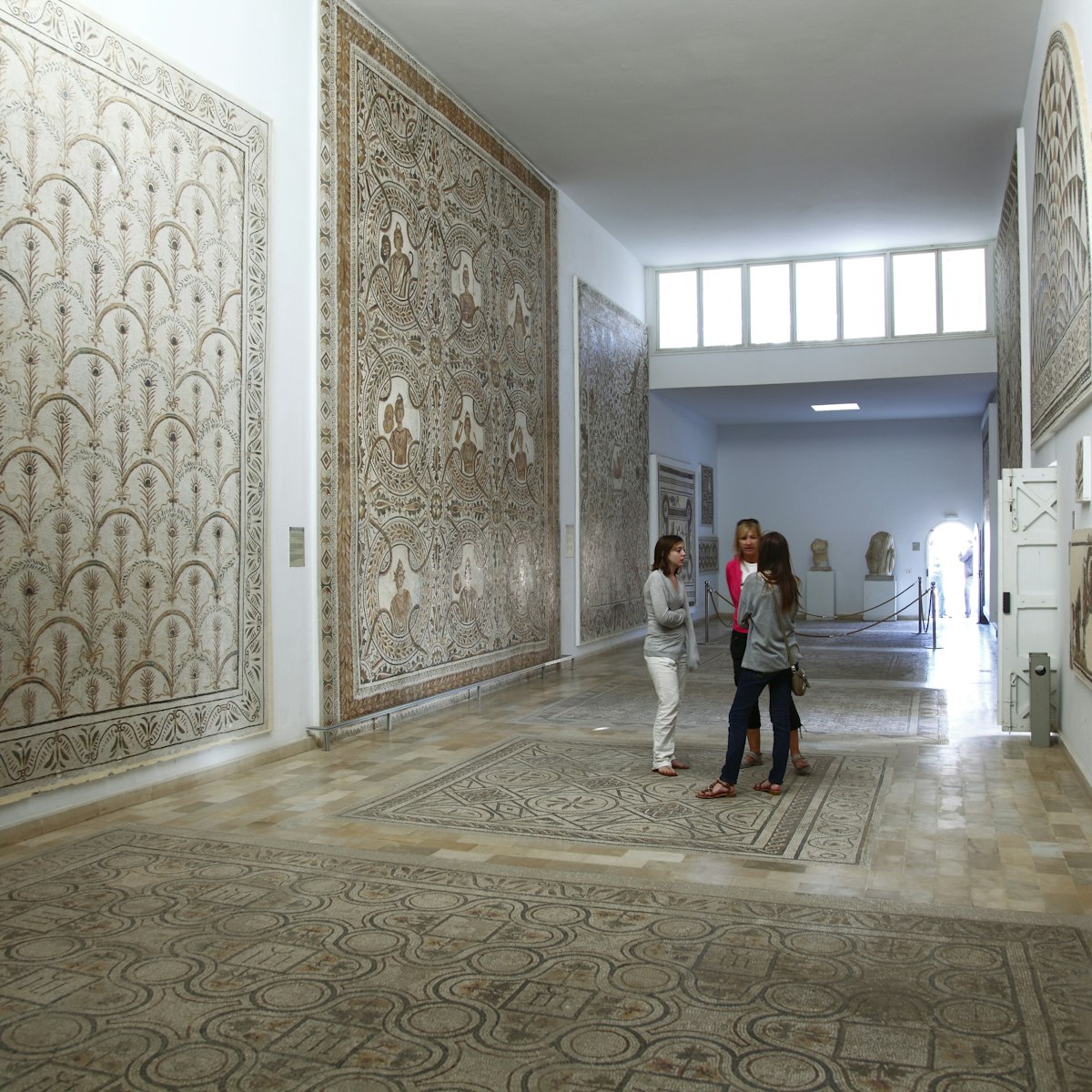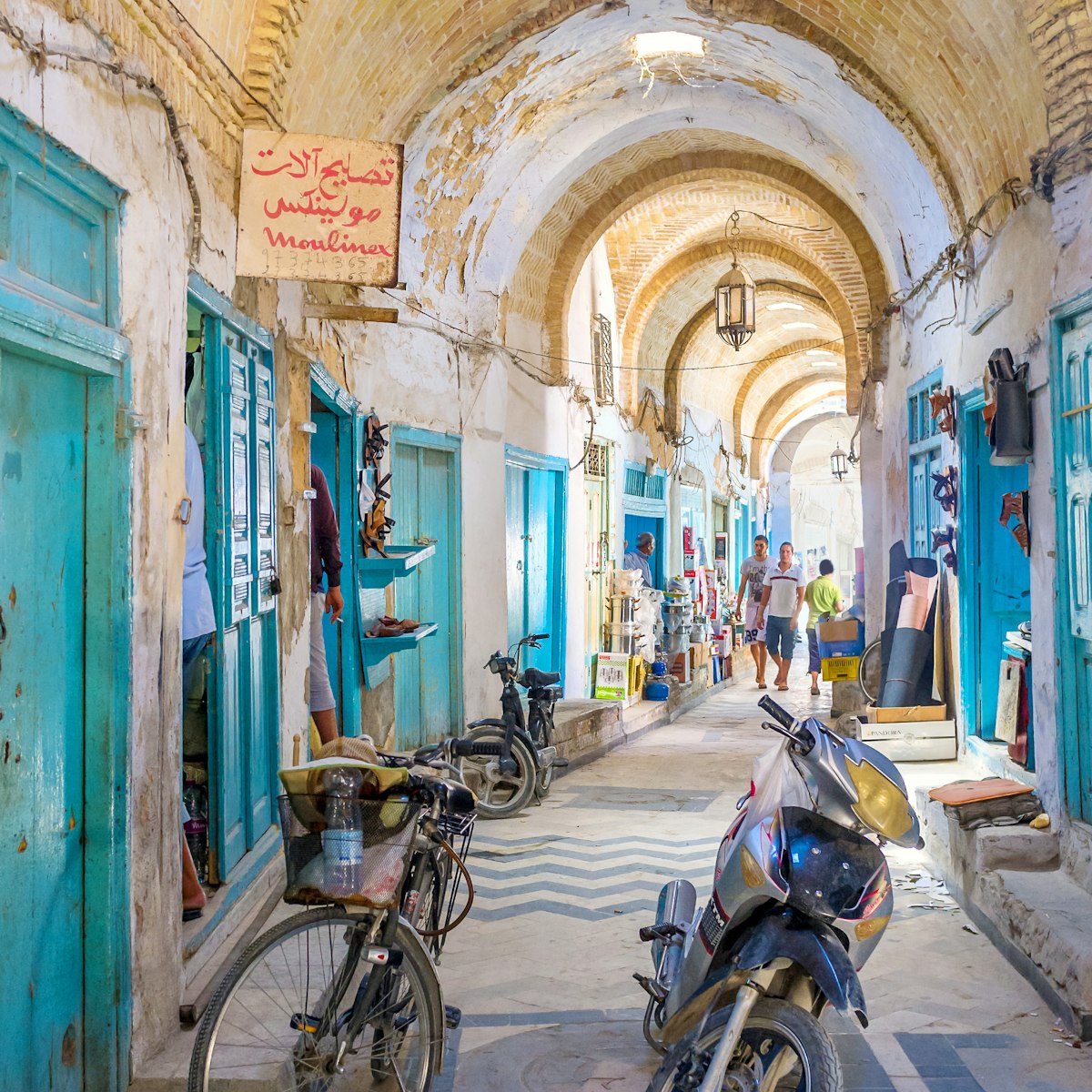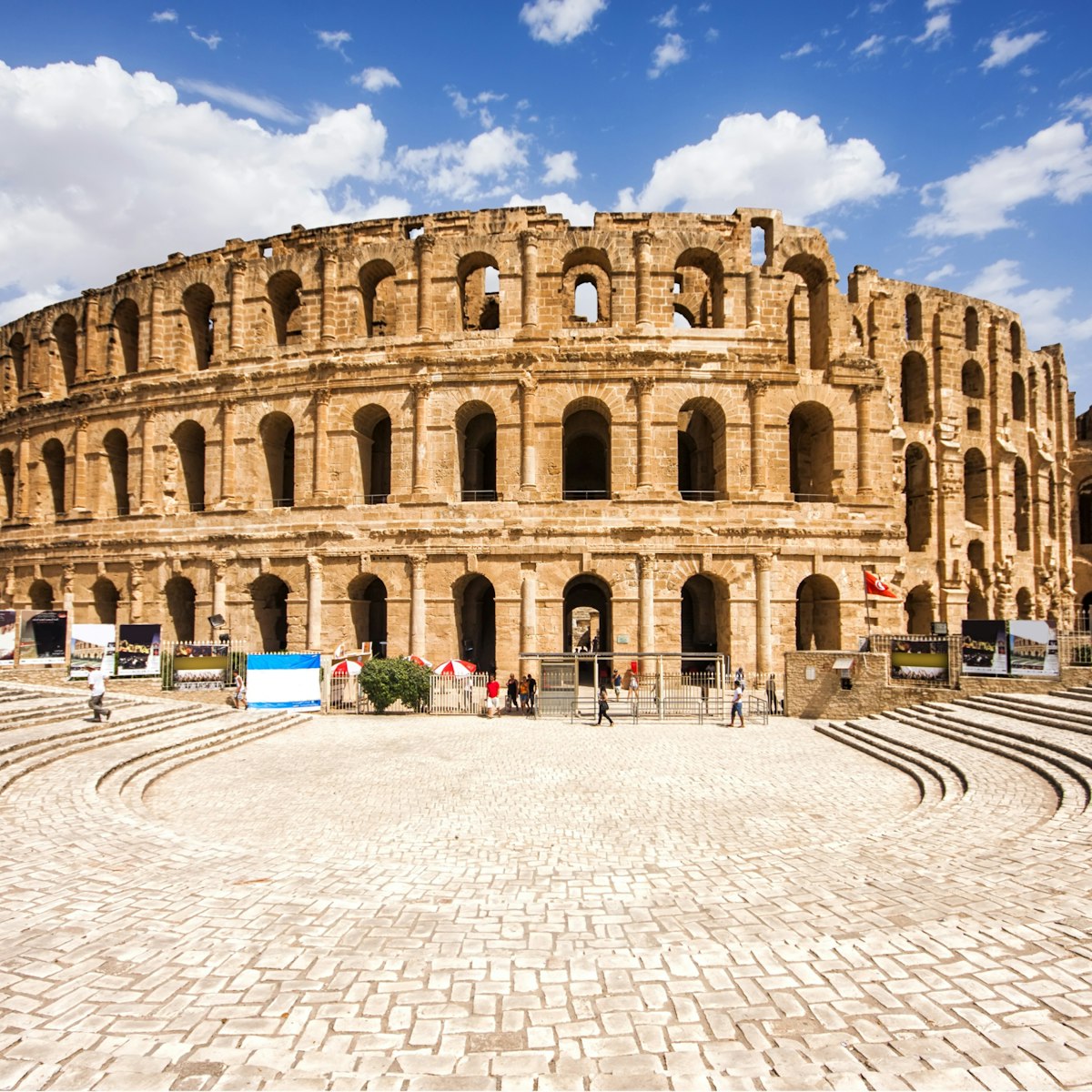
This Unesco World Heritage–listed colosseum was the second-largest in the Roman world (after Rome's); it was 149m long by 124m wide, with three tiers of seating 30m high. Its seating capacity has been estimated at up to 35,000 – considerably more than the population of the town itself. Built entirely of stone blocks, with no foundations, its facade comprises three levels of arcades. Inside, most of the supporting infrastructure for the tiered seating has been preserved.
The colosseum is believed to have been built between AD 230 and 238, and is generally attributed to the African proconsul Gordian, a local landowner and patron. Stone for construction had to be hauled all the way from the quarries at Sullectum (modern Salakta), 30km away on the coast, and water was brought 15km by underground aqueduct from the hills northwest of town.
In AD 238, Gordian was declared emperor of Rome here during an ill-fated rebellion against the emperor Maximus. Gordian is said to have committed suicide in the amphitheatre when it became obvious that the rebellion was doomed.
The colosseum later doubled as a last line of defence. The Berber princess Al Kahina was besieged here by Arab forces at the end of the 7th century. According to legend, the colosseum was linked by tunnel to the coastal town of Salakta, enabling Al Kahina to torment her besiegers by waving fresh fish from the top of the walls.
When you enter the colosseum for the first time, you’ll be struck by the indulgent grandeur of the Roman vision. The south side of the amphitheatre is the most intact, allowing a sense of how the seats swept down from the upper tiers to the marble-walled arena, beneath which ran arched corridors.
You can still climb to the upper seating levels and gaze down on the arena. It’s also possible to explore the two long underground passageways that were used to hold animals, gladiators and other unfortunates in their last moments before they were thrust into the arena to provide entertainment for the masses. It was here that many spent their final lonely minutes, listening to 35,000 people baying for their blood.
For a relatively uninterrupted view back towards the colosseum, take any of the streets behind the colosseum, heading north.
 Publish for free
Publish for free

 zzdtravel
zzdtravel

